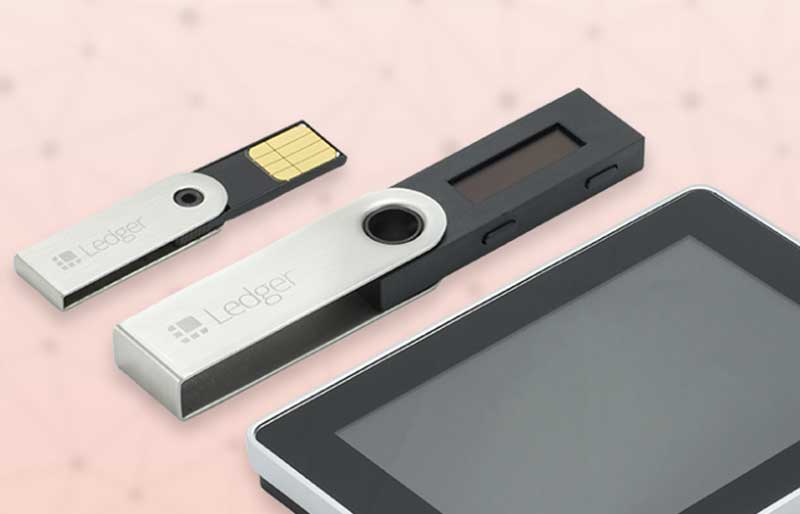 EMERGING TECH
EMERGING TECH
 EMERGING TECH
EMERGING TECH
 EMERGING TECH
EMERGING TECH
Cryptocurrency and blockchain security company Ledger SAS today announced a Series A funding round of $7 million led by MAIF Avenir.
This brings the total funding for Ledger to $8.5 million, following a $1.5 million funding round in 2015, making this one of the biggest blockchain-related startup investments in Europe to date.
Ledger provides products to help companies secure and build out platforms using blockchains, a peer-to-peer distributed secure ledger technology. The company produces hardware wallets for consumers that allow users to store blockchain-enabled cryptographic currencies on their persons securely, server appliances for enterprise and embedded solutions for the Internet of Things.
The company’s best-selling products are the Ledger Nano S and Ledger Blue hardware wallets used for keeping digital currency safe and providing a cryptographic source for digital identity. According to the company, more than 50,000 units have been sold across 30 countries.
With this funding, Ledger expects to expand operations into enterprise offerings that will allow large businesses to develop their own blockchain and cryptocurrency solutions securely.
In 2017, the company intends to launch an enterprise grade security solution for cryptocurrency that includes emerging industry standards that allow for working with multiple currencies, multi-signature capacity and time locked payments for financial technology firms such as marketplaces, hedge funds and banks. The company also intends to build out powerful distributed solutions for the Internet of Things.
“Ledger has seen a tremendous growth in the last months, and we are on track to increase tenfold our revenues this year,” said Eric Larchevêque, chief executive of Ledger. “Our primary objective is to reinforce our position as a global market leader on hardware wallet products, while we accelerate the development of enterprise cryptocurrency solutions through the signature of soon to be announced strategic partnership agreements.”
With this new funding, Ledger is recruiting 20 new collaborators with the intent to build out and develop the company’s sales, marketing, engineering and support teams.
The company is also working on developing specialized embedded blockchain security solutions for the “things” in the Internet of Things. Ledger’s vision is to develop a decentralized communication infrastructure channel that can be licensed for connecting a multitude of devices across large areas securely.
Larchevêque said the company is doing research and development on hardware “oracle” technology for industrial customers for smart grid, supply chain and insurance blockchain uses. Hardware and software oracles are programmable gatekeepers that act to secure information coming into a network from the outside world. An oracle can be software that acts a particular way when something anomalous happens or a piece of hardware that filters input according to expected parameters or shuts down when tampering is detected.
A hardware oracle also acts to sign cryptographically any information produced by the sensor it acts as gatekeeper for. By using private keys known only to the oracle, the hardware can encrypt its own outputs to the network so it cannot be spied on easily and sign its data so that attempts to counterfeit or tamper with the outgoing data are detectable.
By connecting the oracle to a blockchain, Ledger hopes to provide yet another layer of security for the incoming data. Blockchains themselves are designed to securely store published data and distribute it across the platform providing multiple copies that all contain the same cryptographically signed information. This makes it harder to tamper with or counterfeit already published records.
Blockchains used to secure real-world objects or processes must interact directly with the world and, as a result, require a way to trust sensors.
For example, when securing a supply chain with the blockchain, sensors may be embedded along a product’s lifecycle that report on information such as product components placed into a box, the transit of that box and the environmental conditions of that box. At all of these stages, something could happen to the product, components, the box or the environment the box is in. Anything from misadventure to theft to product tampering could lead to bad outcomes. Having a sensor that can be trusted and a secure communication network would save a lot of money in the long term.
The company said that it anticipates that hardware and software oracle technology will see a massive deployment evntually as industrial applications IoT continue to grow.
Other investors joining Avenir in this round were Xange, Wicklow Capital, GDTRE, Libertus Capital, Digital Currency Group, The Whittemore Collection, Kima Ventures, BHB Network and Nicolas Pinto.
THANK YOU